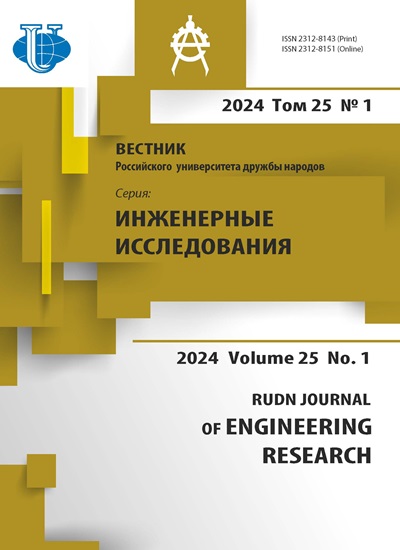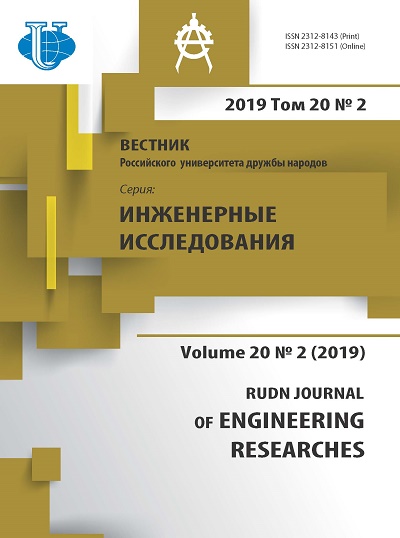Satellite constellation design of on-orbit servicing space system for Globalstar satellites
- Authors: Razoumny V.Y.1, Baranov A.A.1,2, Razoumny Y.N.1
-
Affiliations:
- Peoples’ Friendship University of Russia (RUDN University)
- Keldysh Institute of Applied Mathematics Russian Academy of Sciences
- Issue: Vol 20, No 2 (2019)
- Pages: 111-122
- Section: Aviation and rocket and space technology
- URL: https://journals.rudn.ru/engineering-researches/article/view/22669
- DOI: https://doi.org/10.22363/2312-8143-2019-20-2-111-122
Cite item
Full Text
Abstract
The ballistic problem of on-orbit space serving system configuration design for active Globalstar satellites is considered. These satellites are moving in orbits with close altitudes and inclinations but with significant difference in longitude of ascending node (more than 10 degrees). The onorbit space servicing system is a system of base orbital stations for servicing the given array of the satellites using the detachable orbital modules. The noted acoplanarity leads to high expenses of the total relative velocity (fuel) required for inter-orbit flights to serving satellites. The article provides an example of solving the design problem basing on the developed methodology of optimal serving planning using up-to-date algorithms of estimating energy costs of flights to serving satellites, that significantly decrease flight fuel costs. The problem of configuration design of space serving system as well as the problem of optimal serving planning has been solved basing on the analyzing the deviation map of satellites and orbital stations longitudes of ascending node. It is shown that proposed method allows to define the necessary amount and orbit parameters of orbital stations, the amount of detached orbital modules and total relative velocity, needed to service the given group of spacecraft.
About the authors
Vladimir Yu. Razoumny
Peoples’ Friendship University of Russia (RUDN University)
Author for correspondence.
Email: razumnyy-vyu@rudn.ru
SPIN-code: 6860-2153
Associate Professor at the Department of Mechanics and Mechatronics of Institute of Space Technologies at Academy of Engineering in RUDN University
6 Miklukho-Maklaya St., Moscow, 117198, Russian FederationAndrey A. Baranov
Peoples’ Friendship University of Russia (RUDN University); Keldysh Institute of Applied Mathematics Russian Academy of Sciences
Email: razumnyy-vyu@rudn.ru
SPIN-code: 6606-3690
leading researcher at KIAM of RAS, Professor at the Department of Mechanics and Mechatronics of Institute of Space Technologies at Academy of Engineering in RUDN University, PhD (Physics and Mathematics)
6 Miklukho-Maklaya St., Moscow, 117198, Russian Federation; 4 Miusskaya Sq., Moscow, 125047, Russian FederationYury N. Razoumny
Peoples’ Friendship University of Russia (RUDN University)
Email: razumnyy-vyu@rudn.ru
SPIN-code: 7704-4720
Director of Department of Mechanics and Mechatronics of Institute of Space Technologies, Director of Academy of Engineering of RUDN University, Doctor of Sciences (Techn.), Professor, full member of Russian Academy of Cosmonautics, full member of International Academy of Astronautics
6 Miklukho-Maklaya St., Moscow, 117198, Russian FederationReferences
- Fallin EH. Optimal intersatellite transfers for onorbit servicing missions. Journal of Spacecraft and Rockets. 1975;12(9): 565–568.
- Da Fonseca IM, Goes LCS, Seito N, Da Silva Duarte MK, De Oliveira EJ. Attitude dynamics and control of a spacecraft like a robotic manipulator when implementing on-orbit servicing. Acta Astronautica. 2017;137: 490–497.
- Han C, Zhang S, Wang X. On-orbit servicing of geosynchronous satellites based on low-thrust transfers considering perturbations. Acta Astronautica. 2019;159: 658–675.
- Razoumny YuN, Razoumny VYu, Spencer DB, Agrawal B, Kreisel J, Yasaka T, et al. The concept of OnOrbit-Servicing for next generation space system development and its key technologies. Proceedings of the 68th International Astronautical Congress, IAC 2017. 2017;16: 10486–10499.
- Razoumny Yu, Razoumny V, Baranov A, Varatharajoo R, Kozlov P. Method of optimization of the servicing space-based system orbits and detached units maneuveres parameters in the problem of on-orbitservicing of the given multi-satellite space infrastructure. Proceedings of the 67th International Astronautical Congress, IAC 2016. International Astronautical Federation, IAF; 2016.
- Razoumny VYu, Baranov AA. Planing for onorbit servicing of various satellite systems. RUDN Journal of Engineering Researches. 2016;(4): 16–26.
- CelesTrak: Current NORAD Two-Line Element Sets. Available from: http://celestrak.com/NORAD/elements/ (Accessed 26 September 2018).
- Razoumny VYu, Razoumny YuN, Baranov AA, Malyshev VV. Method of energy estimation of interorbital transfers for LEO spacecraft on-orbit servicing. Advances in the Astronautical Sciences. 2017;161: 701–709.
















